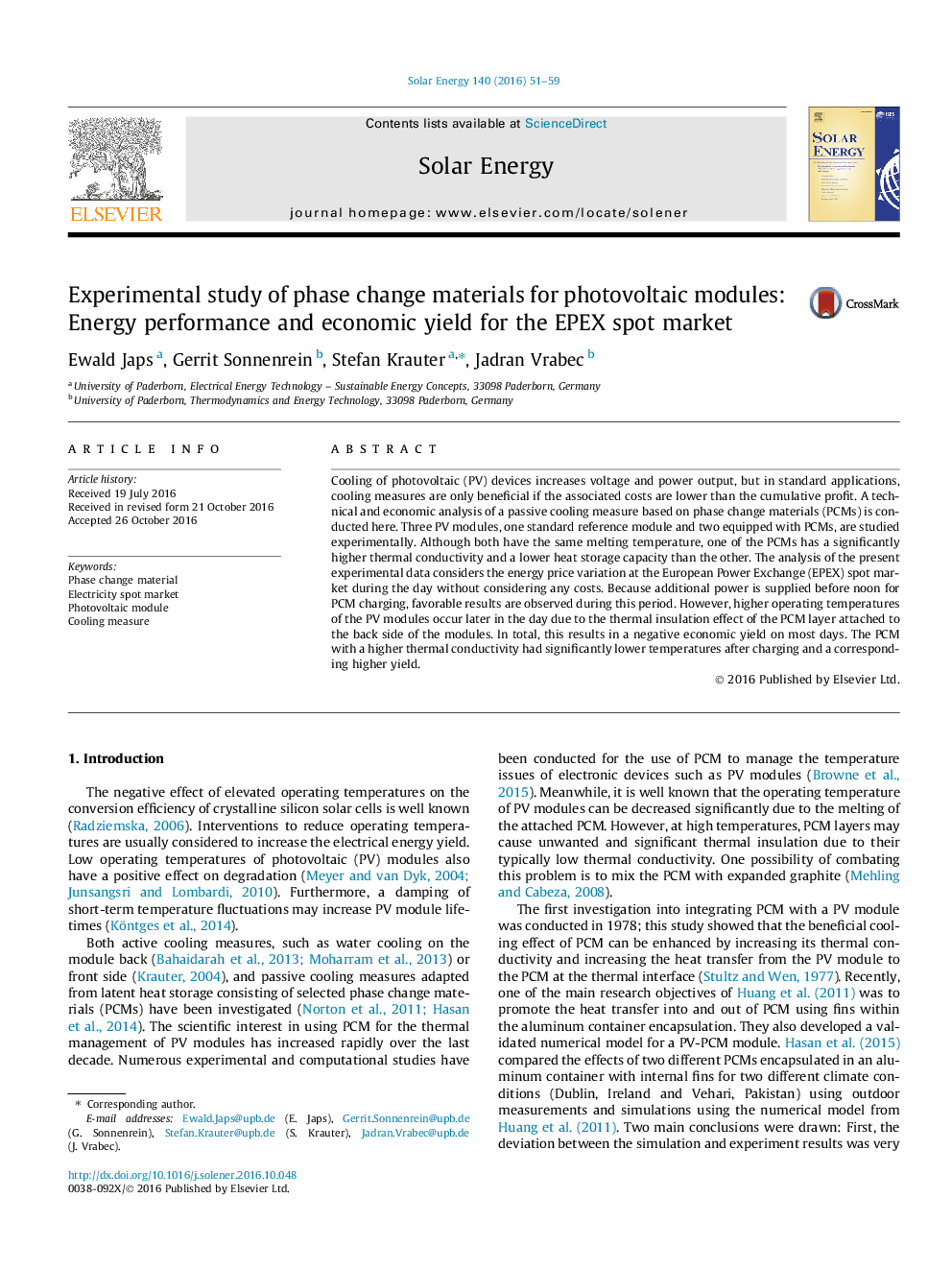| Article ID | Journal | Published Year | Pages | File Type |
|---|---|---|---|---|
| 5451019 | Solar Energy | 2016 | 9 Pages |
Abstract
Cooling of photovoltaic (PV) devices increases voltage and power output, but in standard applications, cooling measures are only beneficial if the associated costs are lower than the cumulative profit. A technical and economic analysis of a passive cooling measure based on phase change materials (PCMs) is conducted here. Three PV modules, one standard reference module and two equipped with PCMs, are studied experimentally. Although both have the same melting temperature, one of the PCMs has a significantly higher thermal conductivity and a lower heat storage capacity than the other. The analysis of the present experimental data considers the energy price variation at the European Power Exchange (EPEX) spot market during the day without considering any costs. Because additional power is supplied before noon for PCM charging, favorable results are observed during this period. However, higher operating temperatures of the PV modules occur later in the day due to the thermal insulation effect of the PCM layer attached to the back side of the modules. In total, this results in a negative economic yield on most days. The PCM with a higher thermal conductivity had significantly lower temperatures after charging and a corresponding higher yield.
Related Topics
Physical Sciences and Engineering
Energy
Renewable Energy, Sustainability and the Environment
Authors
Ewald Japs, Gerrit Sonnenrein, Stefan Krauter, Jadran Vrabec,
